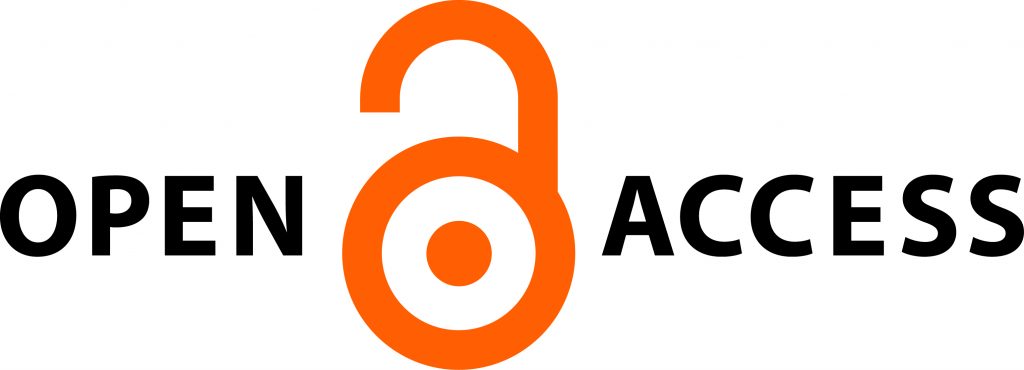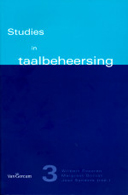
Argument quality plays an important theoretical and methodological role in persuasion research. Researchers frequently refrain from employing independent normative criteria to manipulate argument quality. Instead they use pretests to qualify arguments that evoke predominantly favorable thoughts as strong, and arguments that predominantly evoke unfavorable thoughts as weak. In this paper, we analyze weak arguments as they have been used in actual studies. These weak arguments ranged from arguments referring to less favorable consequences compared to their strong counterparts, to consequences that are irrelevant to the participants, or even to undesirable consequences thereby essentially functioning as counterarguments. We discuss the implications of this practice for our understanding of the persuasion process and our ability to provide evidence-based guidelines for message designers. We also provide guidelines on how to manipulate argument quality using normative criteria.
Hoeken, H., Hornikx, J., & Linders, Y. (2020). The importance and use of normative criteria to manipulate argument quality. Journal of Advertising, 49 (2), 195-201.




 The persuasiveness of anecdotal evidence and statistical evidence has been investigated in a large number of studies, but the combination of anecdotal and statistical evidence has hardly received research attention. The present experimental study therefore investigated the persuasiveness of this combination. It also examined whether the quality of anecdotal evidence affects persuasiveness, and to what extent people comprehend the combination of anecdotal and statistical evidence. In an experiment, people read a realistic persuasive message that was relevant to them. Results showed that anecdotal evidence does not benefit from the inclusion of statistical evidence, nor from its intrinsic quality. The analysis of readers’ cognitive thoughts showed that only a minority of participants comprehended the relationship between anecdotal and statistical evidence.
The persuasiveness of anecdotal evidence and statistical evidence has been investigated in a large number of studies, but the combination of anecdotal and statistical evidence has hardly received research attention. The present experimental study therefore investigated the persuasiveness of this combination. It also examined whether the quality of anecdotal evidence affects persuasiveness, and to what extent people comprehend the combination of anecdotal and statistical evidence. In an experiment, people read a realistic persuasive message that was relevant to them. Results showed that anecdotal evidence does not benefit from the inclusion of statistical evidence, nor from its intrinsic quality. The analysis of readers’ cognitive thoughts showed that only a minority of participants comprehended the relationship between anecdotal and statistical evidence. In international communication, adaptation of messages to the audience’s values has been prominently studied. In advertising, a meta-analysis of experimental studies showed that ads with culturally adapted value appeals are generally more persuasive and better liked than ads with culturally unadapted value appeals. This general effect was not observed for studies with Western Europeans. One explanation may be that these studies did not examine individualism-collectivism – whereas adaptation to this dimension has been shown to be very successful. In this paper, this explanation was tested. Six experiments were conducted in which participants from Belgium, the UK or the Netherlands judged an ad with an adapted, individualistic appeal or with an unadapted, collectivistic appeal. The experiments and a subsequent meta-analysis indicate that Western Europeans are not more persuaded by the culturally adapted than by the culturally unadapted value appeals based on individualism-collectivism. This result nuances earlier findings underlining the importance of cultural value adaptation
In international communication, adaptation of messages to the audience’s values has been prominently studied. In advertising, a meta-analysis of experimental studies showed that ads with culturally adapted value appeals are generally more persuasive and better liked than ads with culturally unadapted value appeals. This general effect was not observed for studies with Western Europeans. One explanation may be that these studies did not examine individualism-collectivism – whereas adaptation to this dimension has been shown to be very successful. In this paper, this explanation was tested. Six experiments were conducted in which participants from Belgium, the UK or the Netherlands judged an ad with an adapted, individualistic appeal or with an unadapted, collectivistic appeal. The experiments and a subsequent meta-analysis indicate that Western Europeans are not more persuaded by the culturally adapted than by the culturally unadapted value appeals based on individualism-collectivism. This result nuances earlier findings underlining the importance of cultural value adaptation Studies on persuasive arguments have generally found that claims supported by high-quality evidence are better accepted than claims supported by low-quality evidence. However, an experiment by Hoeken and Hustinx (2007) demonstrated that this effect was only observed in short texts (a claim with evidence), but not in longer texts (where information unrelated to the evidence was added at the end of the text). The present experiment was conducted to examine whether this effect of text length could be explained by distraction (the additional text at the end distracts the reader) or by dilution (the additional text makes the fragment less diagnostic for claim evaluation). Participants (N = 629) read two texts with a claim supported by high-quality or low-quality (anecdotal, statistical, or expert) evidence. The text was presented in one of the three versions: (1) short, (2) long with additional information at the end, or (3) new in comparison to Hoeken and Hustinx (2007) – long with additional information at the start. The data found support for the distraction explanation. An effect of evidence quality on claim acceptance was observed in two conditions: in the short text, and in the longer text with additional information at the start. The effect of evidence quality was not found in the longer text with additional information at the end.
Studies on persuasive arguments have generally found that claims supported by high-quality evidence are better accepted than claims supported by low-quality evidence. However, an experiment by Hoeken and Hustinx (2007) demonstrated that this effect was only observed in short texts (a claim with evidence), but not in longer texts (where information unrelated to the evidence was added at the end of the text). The present experiment was conducted to examine whether this effect of text length could be explained by distraction (the additional text at the end distracts the reader) or by dilution (the additional text makes the fragment less diagnostic for claim evaluation). Participants (N = 629) read two texts with a claim supported by high-quality or low-quality (anecdotal, statistical, or expert) evidence. The text was presented in one of the three versions: (1) short, (2) long with additional information at the end, or (3) new in comparison to Hoeken and Hustinx (2007) – long with additional information at the start. The data found support for the distraction explanation. An effect of evidence quality on claim acceptance was observed in two conditions: in the short text, and in the longer text with additional information at the start. The effect of evidence quality was not found in the longer text with additional information at the end. Reclameclaims worden soms versterkt of afgezwakt door markeerders als ‘in alle gevallen’ of ‘in de meeste gevallen’. Bestaand experimenteel onderzoek naar de overtuigingskracht van markeerders laat uiteenlopende resultaten zien. Het huidige onderzoek probeert deze bevinding te verklaren door de perceptie van versterkende en afzwakkende markeerders in isolatie en in een reclamecontext te meten. Proefpersonen (N = 230) kenden een mate van waarschijnlijkheid toe aan beide markeerders in isolatie en in een reclamecontext (ingebed in een productclaim). De markeerders lijken hun doel niet te dienen: op een 100-puntsschaal scoren afzwakkers 64 (isolatie) of 57 (reclamecontext) en versterkers 78 (isolatie) of 70 (reclamecontext). Met deze scores voor markeerders is het niet vreemd dat de overtuigingskracht van productclaims niet toeneemt wanneer markeerders worden toegevoegd. In een reclamecontext waren, zoals verwacht, de waarschijnlijkheidsinschattingen significant lager dan in isolatie.
Reclameclaims worden soms versterkt of afgezwakt door markeerders als ‘in alle gevallen’ of ‘in de meeste gevallen’. Bestaand experimenteel onderzoek naar de overtuigingskracht van markeerders laat uiteenlopende resultaten zien. Het huidige onderzoek probeert deze bevinding te verklaren door de perceptie van versterkende en afzwakkende markeerders in isolatie en in een reclamecontext te meten. Proefpersonen (N = 230) kenden een mate van waarschijnlijkheid toe aan beide markeerders in isolatie en in een reclamecontext (ingebed in een productclaim). De markeerders lijken hun doel niet te dienen: op een 100-puntsschaal scoren afzwakkers 64 (isolatie) of 57 (reclamecontext) en versterkers 78 (isolatie) of 70 (reclamecontext). Met deze scores voor markeerders is het niet vreemd dat de overtuigingskracht van productclaims niet toeneemt wanneer markeerders worden toegevoegd. In een reclamecontext waren, zoals verwacht, de waarschijnlijkheidsinschattingen significant lager dan in isolatie.
